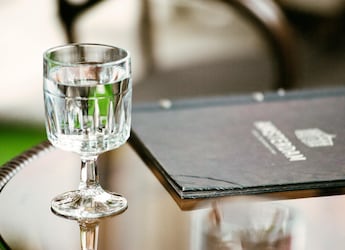Bengalis and their love for fish needs no introduction. In fact, ask anyone around the globe to define Bengali food, the first reply you will get is 'machher jhol' (fish curry). We agree, 'machher jhol' is no less than a Bengali food mascot, but there's much more than this to explore. In Bengal, you will find different types of fish and their countless recipes. One of the major reasons for this obsession with fish is its availability. Geographically, the state is located beside Bay of Bengal and nestles rivers including Ganges, Damodar, Teesta, Hoogly, Rupnarayan and more. The dominance of water bodies in the region has subsequently influenced the food culture. Besides, historically, fish was the main source of protein in Bengal (since the moist climate is not suitable for growing dal in the region), which was then mixed with local ingredients to create unique and super delicious delicacies.
One such iconic Bengali fish recipe is paturi. Etymologically, the word 'paturi' comes from 'pata', meaning leaf. In this recipe, banana leaf has the most important role to play. To put it simply, paturi is marinated fish, wrapped in banana leaf and steamed to perfection. Traditionally, bhetki fish is used to prepare this dish. But you can also go for basa, if bhetki is not available around. During the monsoons, paturi is also made with the delicious hilsa fish.
Paturi recipe also finds several regional counterparts across community. In Parsi cuisine, you get 'patra ni macchi', Assamese refer to it as 'bhapot diya mach'; whereas, in Odhia it is called 'machcha patropoda'. You also get a South Indian version of it, which is popularly known as 'meen pollichathu'. Interestingly, Laos (country near Thailand) has a similar recipe called 'mok pa'. While the process of making these recipes remain the same, what makes each different from the other are the fishes and spices they use.
Also Read: Bengali Cuisine: 7 Bengali Curries That Have Our Heart (Recipes Inside)
How To Make Bhetki Paturi: Bengali-Style Steamed Fish, Wrapped In Banana Leaf:
Here we bring you the classic recipe of Bengali fish paturi, that is prepared with the soft, boneless and juicy bhetki fish. You can replace it with hilsa or basa, as per availability.
To start with, marinate the fish with salt and turmeric and keep aside. Meanwhile, prepare the paste for margination - make a paste with mustard seeds, poppy seeds and green chillies and add to a bowl of freshly grated coconut (some like using coconut milk instead). To it, add salt and turmeric and mix everything well. Refrigerate the margination for almost an hour. Then, marinate the fish with this paste and mustard oil. Coat the paste on each and every fish very carefully. Keep aside.
Now, heat a banana leaf (don't burn it), grease one side with mustard oil and add the margination on it. Place the fish and a green chilli on the margination carefully and fold the leaf to make a parcel. You can use toothpick to tuck in the parcel.
Finally, when the preparation is done, heat a pan, grease some mustard oil and place the parcel on it. Close the lid and steam on a low-medium flame. That's it. Bhetki paturi is ready to be relished.
We suggest, pair it with hot rice and devour! Trust us, it is delicious experience for every fish lover.
Click here for the detailed recipe of bhetki paturi.
For more such Bengali-style fish recipes, click here.
